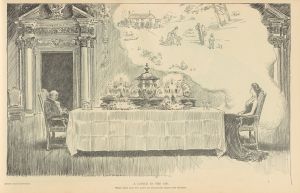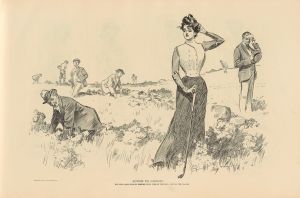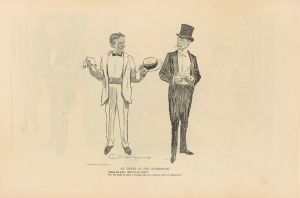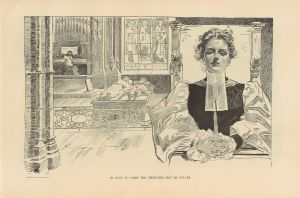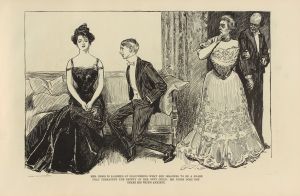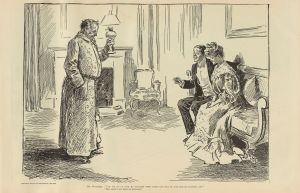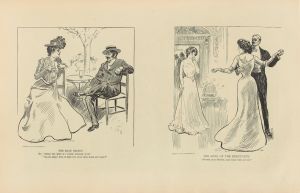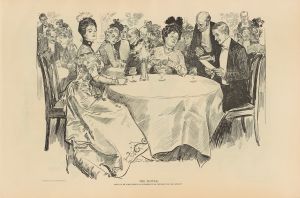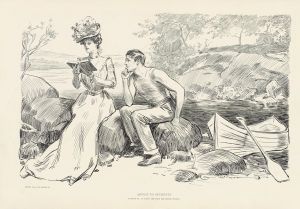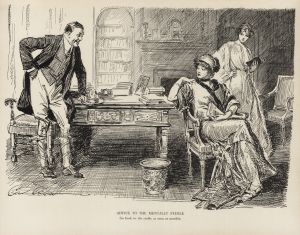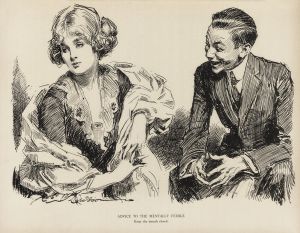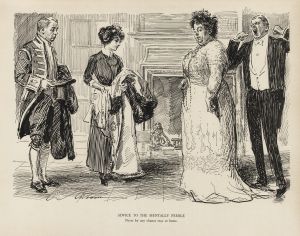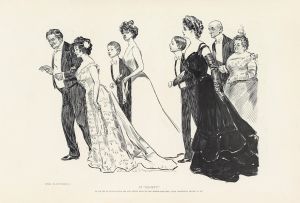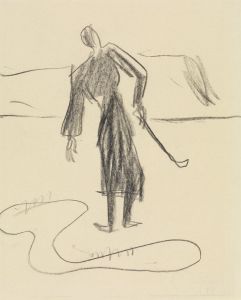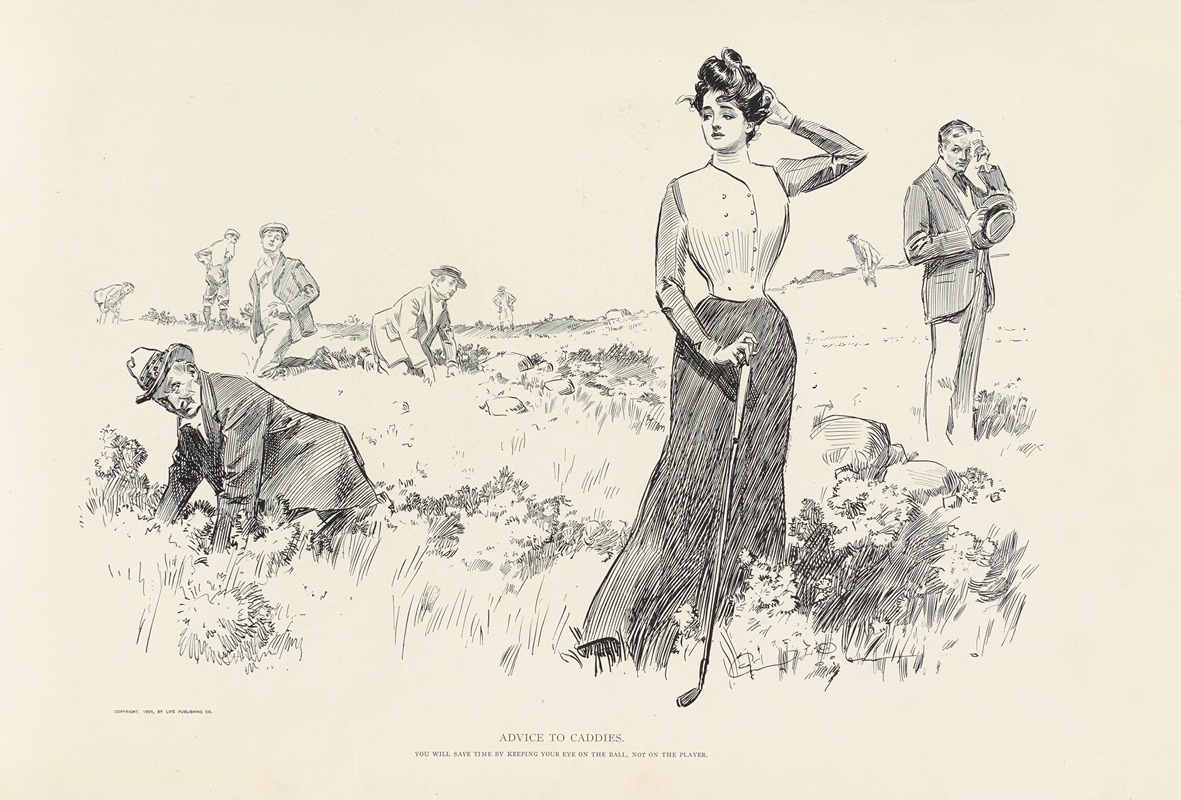
Advice to caddies
A hand-painted replica of Charles Dana Gibson’s masterpiece Advice to caddies, meticulously crafted by professional artists to capture the true essence of the original. Each piece is created with museum-quality canvas and rare mineral pigments, carefully painted by experienced artists with delicate brushstrokes and rich, layered colors to perfectly recreate the texture of the original artwork. Unlike machine-printed reproductions, this hand-painted version brings the painting to life, infused with the artist’s emotions and skill in every stroke. Whether for personal collection or home decoration, it instantly elevates the artistic atmosphere of any space.
"Advice to Caddies" is an illustration by Charles Dana Gibson, an influential American graphic artist best known for his creation of the "Gibson Girl," a representation of the idealized American woman at the turn of the 20th century. Gibson's work was widely published in magazines such as Life, Harper's Weekly, and Scribner's, making him one of the most prominent illustrators of his time.
The illustration "Advice to Caddies" reflects Gibson's keen eye for social commentary and his ability to capture the nuances of American society during the late 19th and early 20th centuries. Although specific details about the creation date and context of this particular illustration are not extensively documented, it is consistent with Gibson's style and thematic interests.
Gibson's illustrations often depicted scenes of leisure and social interaction among the upper classes, and "Advice to Caddies" is no exception. The artwork likely portrays a scene on a golf course, a setting that was becoming increasingly popular among the affluent during this period. Golf, having been imported from Scotland, was gaining traction in the United States, and country clubs were emerging as important social venues.
In "Advice to Caddies," Gibson would have employed his characteristic pen-and-ink technique, which allowed for detailed and expressive line work. This method was particularly effective in capturing the fashion and demeanor of his subjects, often highlighting the contrast between the leisurely upper class and those who served them, such as caddies. The caddies, typically young boys or men, were responsible for carrying golfers' bags and providing assistance on the course, a role that was both physically demanding and socially instructive, as it exposed them to the manners and expectations of the elite.
Gibson's work, including this illustration, is noted for its wit and subtle critique of social norms. Through his art, he often explored themes of gender roles, class distinctions, and the evolving American identity. The "Gibson Girl," for instance, was both a celebration and a satire of contemporary femininity, embodying independence and confidence while also adhering to societal expectations of beauty and decorum.
While "Advice to Caddies" may not be as widely recognized as some of Gibson's other works, it remains a part of his extensive portfolio that offers insight into the cultural and social dynamics of his era. Gibson's legacy as an illustrator is marked by his ability to capture the spirit of his time with humor and precision, making his work a valuable resource for understanding the historical context of early 20th-century America.





